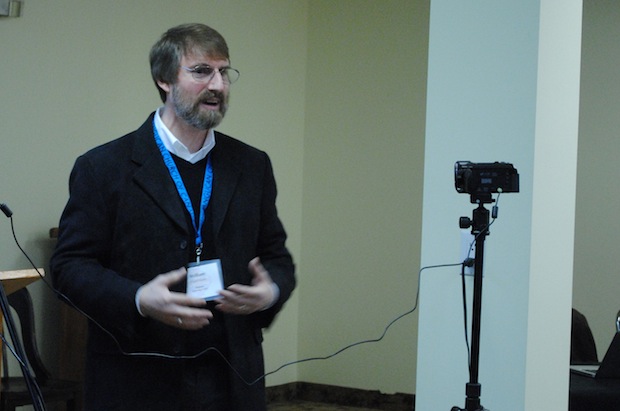Western Anglicanism seems to have reached the point where it no longer believes in its own creeds. After all, if Anglican clergy actually believed that God came to earth as a man, if he is the propitiation for our sins, if he rose bodily from the dead, if he is alive today and will one day return, surely they would want to convince others of this. Including those of other faiths. Including Muslims – they rarely tire of telling us how inclusive they are.
Rather than “make disciples of all nations” the mission has become “observe similarities with all religions”.
From here:
St. John the Evangelist Anglican Church in Leamington, Ont. made headlines recently with an ongoing foray into interfaith cooperation.
Following its annual picnic last September in which the church had invited Syrian refugees to attend, St. John established an arrangement with a local Muslim community to use the church’s community hall. A CBC report was shared thousands of times on social media, and the Anglican Journal later offered its own coverage.
At a time of rising Islamophobia across Canada and around the world, instances of solidarity between Christians and Muslims such as that at St. John provide counter-examples of Canadian attitudes toward Islam. The Rev. Andrew Wilson, rector at St. John, has received much positive feedback since the story on his church picked up traction.
“The response that people have actually sent to me, they said, ‘This is Canadian. This is who Canada is.’ And they say, ‘Yes, and this is who Christ is.’ So I’ve had both responses,” Wilson said.
Islamic prayer and worship within St. John Anglican church has provided an opportunity for the Anglican clergy and members of congregation to observe similarities between Muslim and Christian worship.



 As the number of Anglicans in Canada decreases and churches close, the parish model—in which every church has a priest and every priest is full-time—is rapidly becoming a relic of the past. How can the Anglican Church of Canada train priests to serve in this new, more uncertain reality?
As the number of Anglicans in Canada decreases and churches close, the parish model—in which every church has a priest and every priest is full-time—is rapidly becoming a relic of the past. How can the Anglican Church of Canada train priests to serve in this new, more uncertain reality?

 For now, all prayers have stopped inside the main part of St. Paul’s Anglican Cathedral.
For now, all prayers have stopped inside the main part of St. Paul’s Anglican Cathedral. Historic St. George’s Church no longer has a prayer.
Historic St. George’s Church no longer has a prayer. Among the most troubling things he witnessed as bishop, Bennett said, was the divisiveness caused by the issue of human sexuality.
Among the most troubling things he witnessed as bishop, Bennett said, was the divisiveness caused by the issue of human sexuality.